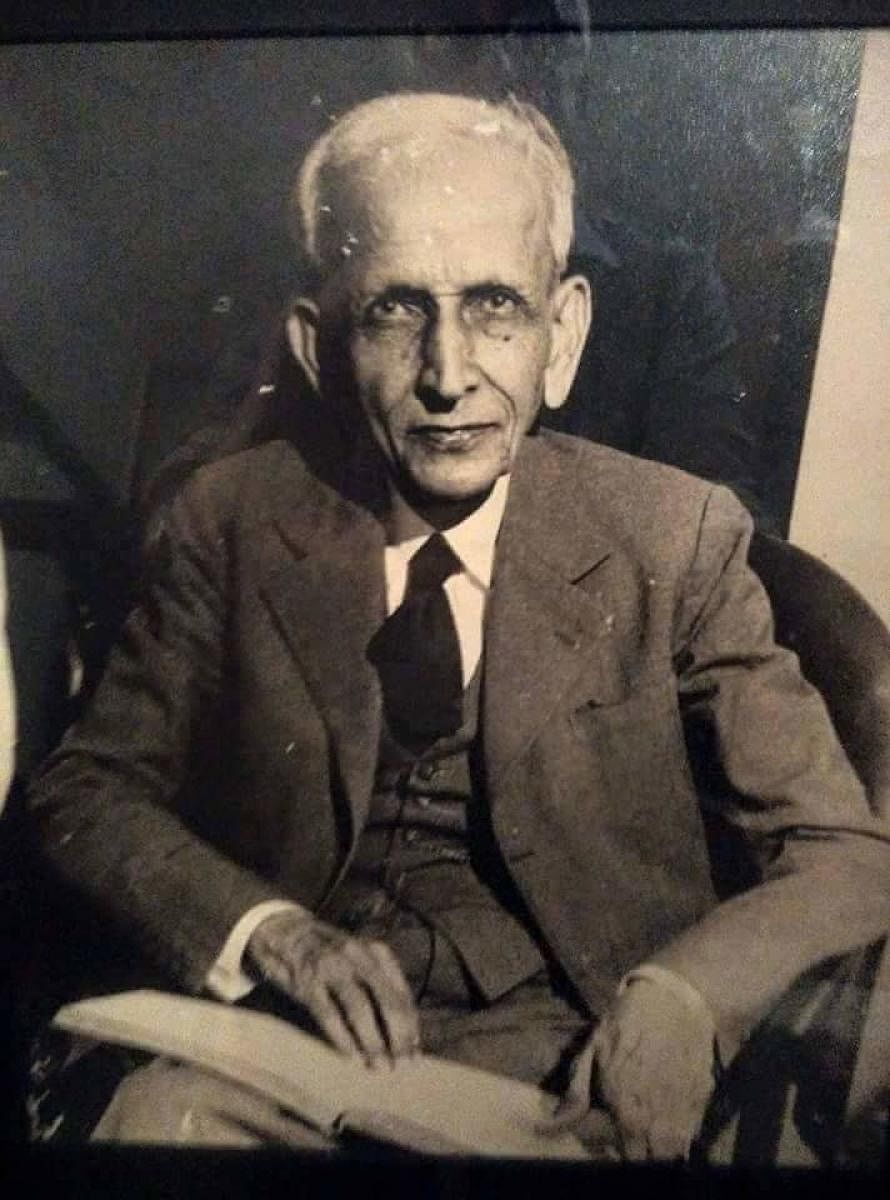Sir MV, an all-rounder indeed



Sir M Visvesvaraya was not ‘all work and no play’.
In 1917, he founded the Century Club and served as its first president in 1917-18. And indeed, he crossed a century when he died at 101 on April 12, 1962. But the stamp and hallmark of the visionary — Mokshagundam Visvesvaraya — fondly called Sir MV — an engineer and statesman, is found in every other sector of modern Karnataka as well — industry, commerce, agriculture and education. It was he who laid the foundation of modern Karnataka. His was an era of all-round development.
Rise and rise
He was known as ‘Maker of Modern Mysore’ and ‘Father of Modern Mysore’. He became the first luminary from Karnataka to be honoured with a postage stamp in September, 1960. He was awarded the nation’s highest honour, the Bharat Ratna, in 1955.
After completing his BA from Central College, Bengaluru in 1881, he joined the Science College in Poona (now Pune) to study engineering and secured the first rank in 1883. In 1884, he joined the Public Works Development of Bombay Presidency as assistant engineer.
After 23 years of service in Bombay Province, he opted for voluntary retirement in 1908. For a short period, he worked for the Nizam of Hyderabad. He suggested flood relief measures for Hyderabad, which was under a constant threat of floods by River Musi.
In 1909, he was appointed as chief engineer of Mysore State and thus began his glorious career in his home state. As an engineer, Visvesvaraya supervised the construction of the Krishnaraja Sagar Dam across River Cauvery in Mandya from conception to inauguration. This dam created the biggest reservoir in Asia when it was built.
Early in his career, he had designed and patented a system of automatic weir water floodgates, first installed in 1903 at the Khadakwasla Reservoir near Pune.
These gates were employed to raise the flood-supply level of storage in the reservoir to the highest level likely to be attained without causing any damage to the dam.
Based on the success of these gates, the same system was installed at the KRS Dam, a proof of his genius. In 1912, he was appointed as Dewan of the princely state of Mysore. It was during his tenure as a dewan for six years that he demonstrated his administrative ability. A lot of progress was achieved during this tenure from 1912 to 1918.
With the support of Krishnaraja Wodeyar IV, Maharaja of Mysore, Visvesvaraya made an exemplary contribution to the all-round development of Mysore State. Many industries and public works owe their inception or active nurturing to him.
Industries
Visvesvaraya initiated what can be termed as ‘industrial revolution’ in the state. It all began with the Mysore Economic Conference in 1911. Three committees were set up for agriculture, industries and commerce. It led to the establishment of the Department of Industries and Commerce.
The sandalwood oil factory was set up in 1916 to modernise the age-old process of extracting sandal oil. This was followed by the Government Soap factory in 1917. In 1918, the famous sandalwood soap came to be manufactured, a product which continues to be popular.
He encouraged private investment. In the private sector, industries such as roller flour mills and textile mills came up.
In 1932, the Government Porcelain Factory was set up in Bengaluru in collaboration with a Japanese company. Later it became a part of Bharat Heavy Electricals Limited, a public-sector undertaking.
Other government factories were set up such as the Mysore Lamp Works in 1936 and The Mysore Vegetable Oil Products in 1938 to manufacture vanaspati and refined oil.
Banking trade and commerce are the lifeblood of an economy. Realising this, he set up the Mysore Bank in 1913, which later became the State Bank of Mysore, and is now merged with the State Bank of India.
Further, he also established the Mysore Chamber of Commerce in 1916, which is now the Federation Karnataka Chamber of Commerce and Industry.
His vision encompassed not just old Mysore Province but the entire state. For instance, in Malnad he set up the Sharavathi Hydro Electric project at Jog Falls in Shivamogga and the Visvesvaraya Iron and Steel Plant, as it is known today, at Bhadravathi.
Education
Education, too, was a priority for him. In 1912, he set up Hebbal Agricultural School, now University of Agricultural Sciences. He played a major role in the promotion of Mysore University in 1916. He upgraded the Maharani’s College in Mysuru to a degree college in 1917. In the same year, he founded the Government College of Engineering, one of the first in India, in Bengaluru. It’s now the Visvesvaraya College of Engineering. In 1943, he founded the Jayachamarajendra Polytechnic Institute in Bengaluru with his earnings from Mysore Iron and Steel Works (now VISL). As the chairman of the steel plant, he had earned Rs 2,00,000, which he contributed entirely for this institute.
Books
Despite his busy schedule as an administrator and engineer, he found time to write several books. He articulated his ideas and vision not only for the State also for India. His Planned Economy for India (1934) is a forerunner to the Five Year Plans. Even before the country envisaged the Five Year Plans after independence, Visvesvaraya conceived a similar planned economy in his book, Nation-building: a Five-year Plan for the Provinces (1937).
His other books include, Unemployment in India: Its Causes and Cure (1932), Prosperity through Industry: Move Towards Rapid Industrialisation, published by All-India Manufacturer’s Organisation in 1943, and District Development Scheme: Economic Progress by Forced Marches, Bengaluru, 1940. He wrote his autobiography, Memoirs of My Working Life in 1954 and revised it as A Brief Memoir of My Complete Working Life in 1960.
Deccan Herald is on WhatsApp Channels| Join now for Breaking News & Editor's Picks